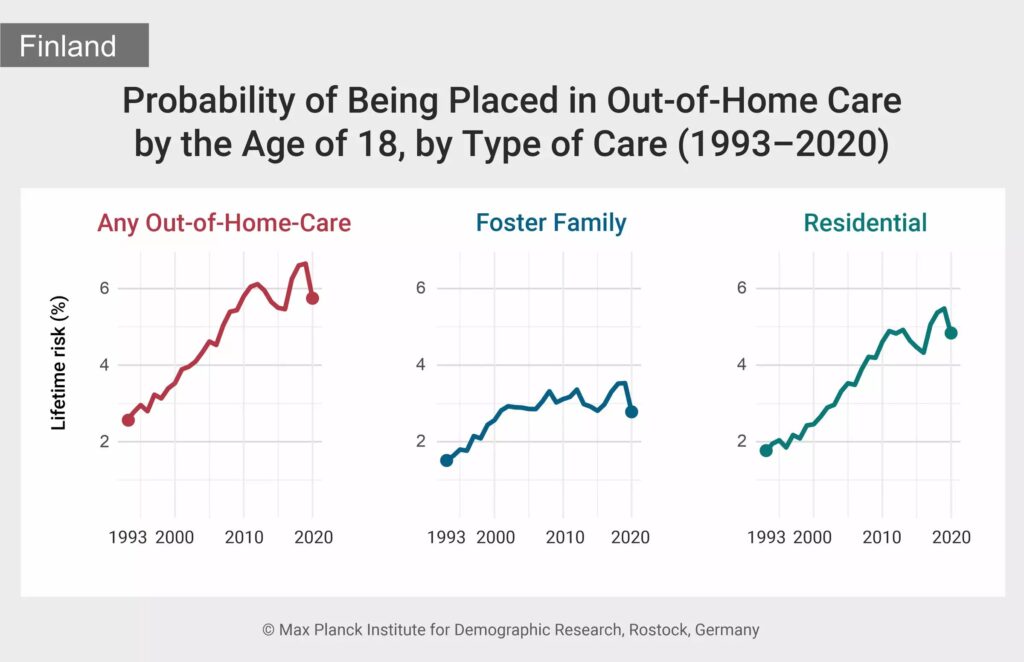
Out-of-home care for children in Finland has seen a dramatic increase, doubling from 1993 to 2020, according to a study published in the journal Child Abuse & Neglect. This rise in placements, which serve as a last resort in child welfare interventions, highlights complex underlying issues such as abuse, neglect, and mental health problems.
The study, conducted by researchers Aapo Hiilamo and Mikko Myrskylä from the Max Planck Institute for Demographic Research (MPIDR) along with colleagues from the University of Helsinki, utilized demographic methods to provide a more comprehensive view of out-of-home care trends at the population level.
New Metrics Offer a Nuanced View
Traditional metrics for monitoring out-of-home care often fall short, as they typically count the number of children living outside their parents’ homes at a specific point in time. However, these figures can be misleading, failing to account for age structure differences, care duration, stability, or the potential for family reunification.
“Trends in out-of-home care are usually monitored by counting the number of children living outside their parents’ home at a given point in time. However, these metrics can be misleading because they don’t account for differences in age structure or important aspects such as the duration or stability of care, or the possibility of family reunification. We aimed to address these challenges,” explains Hiilamo, the study’s lead author.
The researchers tracked the daily living arrangements of all children in Finland, calculating their probabilities of entering and exiting out-of-home care by age and year. Their innovative approach revealed that about 6% of children were expected to experience at least one out-of-home care episode in 2020, a twofold increase since 1993.
Rising Trends and Unanswered Questions
This increase in out-of-home care placements, particularly in residential settings, raises significant concerns. Despite the heightened risk of placement, the expected duration of care has decreased from 4.2 years in the early 1990s to 3.5 years in 2020. Moreover, the probability of children returning home by age 18 has improved from 32% to 44%.
“The rise in out-of-home care in general and in residential care in particular is both concerning and puzzling. Known risk factors, such as juvenile delinquency and alcohol consumption, have not changed in parallel, and similar trends are not seen across other Nordic countries. Further research is needed to understand why Finland has such high rates of out-of-home placements,” explains Hiilamo.
This development comes amid stable rates of juvenile delinquency and alcohol consumption, suggesting that other factors may be contributing to the increase. The discrepancy between Finland and other Nordic countries further complicates the issue, prompting calls for more in-depth research to uncover the root causes.
Implications for Child Welfare Research
The demographic methods employed in this study offer valuable insights and can be adapted for use in other countries and areas of child welfare. These methods could help explore transitions between child and youth welfare services, the interventions provided, and the risks associated with running away from foster care.
“Demographic research often focused on older populations due to aging societies, but these methods are equally valuable to studying children and youth. Demographic tools help quantify differences in child and youth welfare services across time and space, and thanks to new software developed at the MPIDR, these tools are now more accessible,” concludes Hiilamo.
As Finland grapples with these rising trends, the study underscores the importance of developing a more nuanced understanding of child welfare systems. The findings could inform policy decisions and lead to improved interventions that better support vulnerable children and their families.
Looking ahead, the research community is poised to further investigate the factors driving these trends, with the goal of enhancing child welfare practices not only in Finland but globally.






